What is sourdough bread and why should you make it? Here’s everything you need to know about sourdough: making sourdough starter, the benefits of sourdough bread, the best sourdough tips and tricks, and of course, yummy sourdough bread recipes!

If you’ve ever asked yourself “What is sourdough bread?” or “Is sourdough bread healthy?” or “What are the benefits of sourdough bread?” or even “Do I really need to spend 24 hours making ONE loaf of bread?” – then you’re in the right place.
I’ve had these same questions myself and spent way too many hours trying to figure it all out on my own.
I’m saving you the time and headache and compiling the answers to these questions (in plain English) as well as a simple method for making a sourdough bread starter, details on gluten-free sourdough, and plenty of easy sourdough bread recipes, in this beginner’s guide to sourdough.
Read on to learn about sourdough and how to get started!
WHAT IS SOURDOUGH BREAD? (A PRIMER)
Regular bread (typical store-bought white or wheat sandwich bread) is made using active dry yeast or instant dry yeast. This is the key ingredient that makes the bread rise in anywhere from 30 minutes to several hours.
Active dry yeast and instant dry yeast most often come in little 3-packs at the grocery store. The most basic bread recipes use commercial yeast, water, all-purpose flour or whole wheat flour or bread flour, and salt, whether the bread is store-bought or made at home.
WHAT IS SOURDOUGH?
Sourdough is slow-fermented bread. It’s made using an active sourdough starter that contains wild yeast – NOT the little packets of yeast from the store. Wild yeast (also known as natural leaven) is captured from the air in a sourdough starter. This is what makes the sourdough bread rise, but it takes significantly longer – anywhere from 12 to 36 hours, depending on the recipe and method. (The rise time in sourdough baking is often called a proof or bulk fermentation.)
Sourdough bread is known for its tangy and sour flavor, chewy texture on the inside (sometimes with big holes, sometimes without), and golden crispy crust on the outside.
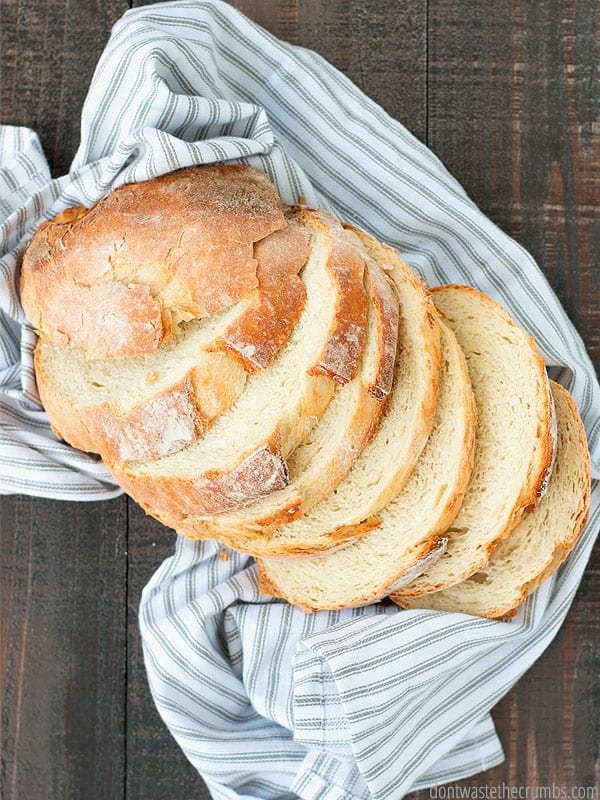
MAKING SOURDOUGH STARTER
Sourdough is probably the absolute easiest homemade ferment I’ve ever made. In fact, it nearly ties kefir for the easiest fermentation ever.
- Mix flour and water.
- Wait.
- Repeat.
Seriously? In seven minutes – one minute a day – I had natural leaven ready for homemade bread. It’s the perfect recipe for those with busy schedules (and bloggers testing out various types of flour in an assortment of baking recipes).
Sourdough starter is a live culture made by adding water to room-temperature flour. This combination activates the good bacteria found in both the flour and your environment. Here’s a simple explanation of the process:
- flour + water = natural enzymes break down starches into glucose (sugar), and good bacteria create lactic acid and acetic acid (tang)
- glucose (sugar) + natural bacteria (tang) = food for wild yeast (leaven) which it attracts from the environment
- wild yeast (leaven) + more flour + more flour = more wild yeast
- more wild yeast + even more flour + even more flour = natural leaven (carbon dioxide)
Once your sourdough starter is mature (at least 30 days old) and consistently bubbles when you feed it, you are ready to bake sourdough bread!
Here’s a step-by-step tutorial on making a sourdough starter, including how much flour and water to start with, how much and how often to feed the starter, and what to do with the sourdough starter discard so you aren’t throwing away good food.
TIPS FOR THE BEST SOURDOUGH BREAD STARTER
- Water kefir can be used instead of filtered water when making a starter. In general, this method produces a ready starter in less time.
- Feeding the starter more often will cause the yeast to multiply faster.
- Yeast thrives better with more rather than less air circulation.
- Pouring off the excess liquid on the top of your starter will lessen the sour taste. You can also just mix it back in.
- In general, thicker starters yield better-baked goods, so use less water when feeding the starter. Alternatively, if the starter feels too thick for a recipe, add water.
- Sourdough is forgiving. It thrives when fed regularly but won’t throw fits if you miss a feeding (or two).
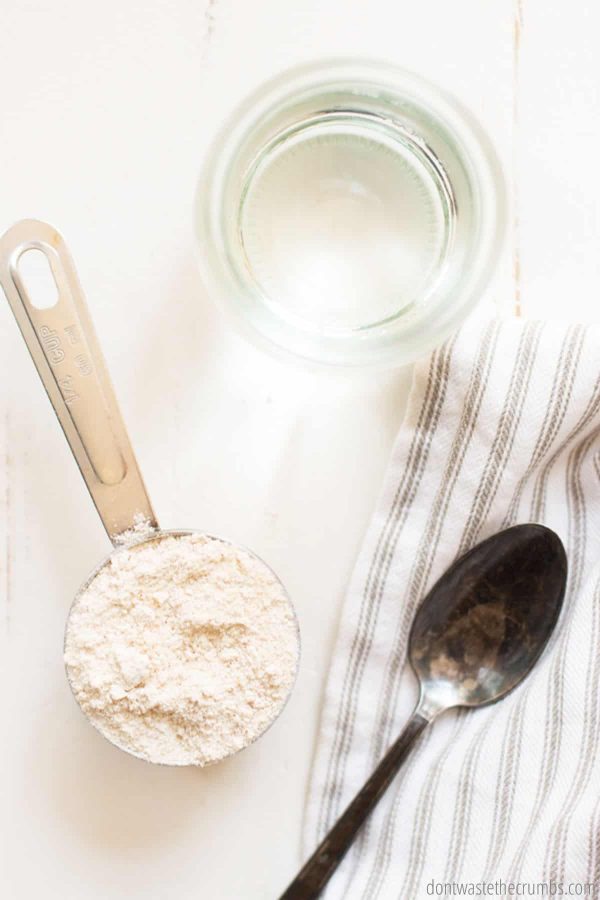
BENEFITS OF SOURDOUGH BREAD
Is sourdough bread healthy? When compared to typical white or wheat sandwich bread, there are some pretty obvious sourdough bread benefits.
Sourdough bread is essentially fermented, just like yogurt, sauerkraut, and kombucha. Most of the population inherently knows that these foods are good for you, and there are other benefits of sourdough bread too:
- More B vitamins. During the fermentation process, the good bacteria unlock B vitamins in the bread, including vitamin B12 which is typically found in animal-based foods.
- More prebiotic and probiotic properties. Prebiotics feed existing gut flora and cause it to multiply. Probiotics do good things while they’re temporarily passing through the digestive system. Both prebiotics and probiotics help improve gut health.
- May help digest gluten. Sourdough bread is not inherently gluten-free, but the long fermentation of the gluten can help improve the digestion of gluten, making it possible for some who are sensitive to gluten (not Celiac) to enjoy bread again.
- Helps digest starches. The long soaking required of sourdough breaks down much of the phytates that bind the minerals in grains. With the phytates gone, our bodies can more easily digest starches and use the nutrients in the grains. Read more about soaking grains here.
- May promote healthy aging. This study found that sourdough contains antioxidants and qualities that are anti-hypertensive and anti-diabetic.
- May lower blood sugar. Sourdough bread doesn’t cause your blood sugar to rise as high, or as quickly, as typical white bread or whole-wheat bread. Sourdough also tends to be higher in fiber, which counteracts the strain on blood sugar.
One last neat tidbit: sourdough bread is less likely to get stale, retains much of its moisture as it ages, and its acidity helps prevent the growth of mold! Now this doesn’t mean your sourdough won’t EVER go stale and will NEVER grow mold. But it’s nice to know that the artisan loaf you treated yourself to at the farmer’s market won’t go bad too quickly.
IS SOURDOUGH BREAD HEALTHY?
In traditional sourdough recipes, you’ll find just four ingredients:
- Starter Culture (a.k.a. sourdough starter made with flour and water)
- Flour
- Water
- Salt
There is no yeast, no milk, no oils, and no sweeteners in most traditional sourdough bread recipes. It’s about as simple of an ingredients list as you can get when it comes to bread!
That doesn’t mean you CAN’T add milk or oils or sweeteners to sourdough. My Sourdough Sandwich Bread uses milk and butter to create a softer crumb, and my Whole Wheat Sourdough Bread uses honey to balance the heartiness of the whole wheat flour. You could easily add herbs or cheeses or dried fruit to create endless flavors of delicious sourdough bread.
What you want to be on the lookout for, though, is store-bought sourdough bread that contains yeast, processed oils, and preservatives. These are considered “cheats” in the sourdough world, and any “sourdough” loaf that has them isn’t a true loaf of sourdough bread.
IS SOURDOUGH BREAD GLUTEN-FREE?
No, sourdough bread is not inherently gluten-free. I mentioned above that the fermentation process breaks down the gluten in flour, making it easier to digest, but it doesn’t eliminate the gluten altogether.
You CAN, however, make gluten-free sourdough bread. This is a trusted recipe that yields a great loaf.
In order to make gluten-free sourdough, you need a gluten-free sourdough starter. Find the complete step-by-step process here.
SOURDOUGH VS. SOAKING VS. SPROUTING
In a real food kitchen, we only have so much time. This means that sometimes, we have to choose which foods or methods get our priority, and which ones we take shortcuts on. In an ideal world, I’d have time for making sourdough bread, soaking the oats, and sprouting the almonds.
But if I have to choose, which of these real food methods is giving me the most bang for my buck?
SOURDOUGH
Sourdough Pros: Takes very little hands-on time, is the least expensive bread recipe, plenty of nutrition benefits (see above).
Sourdough Cons: Rise times are a bit unpredictable depending on your kitchen, occasional fails happen.
SOAKING
Soaking Pros: Soaking is mostly hands-off and doesn’t cost extra if you already have the soaking liquid (such as whey) in your kitchen, soaking breaks down gluten and phytic acid, and soaking predigests starches, easing the work of the body.
Soaking Cons: Need to plan ahead to include soaking time, sometimes you have to convert recipes to include soaking, the cost of soaking liquid, doesn’t break down all of the phytic acid, only works for whole grains so no point if using white flour.
Read more about The Science Behind Soaking Grains here.
SPROUTING
Sprouting Pros: Doesn’t take much time or extra ingredients, plenty of benefits to sprouting.
Sprouting Cons: Possible equipment cost if you want to use a dehydrator or a grain mill, can take up to four days to complete the whole process, and you have to check often during dehydrating to see if they’re done.
Read more about sprouting here.
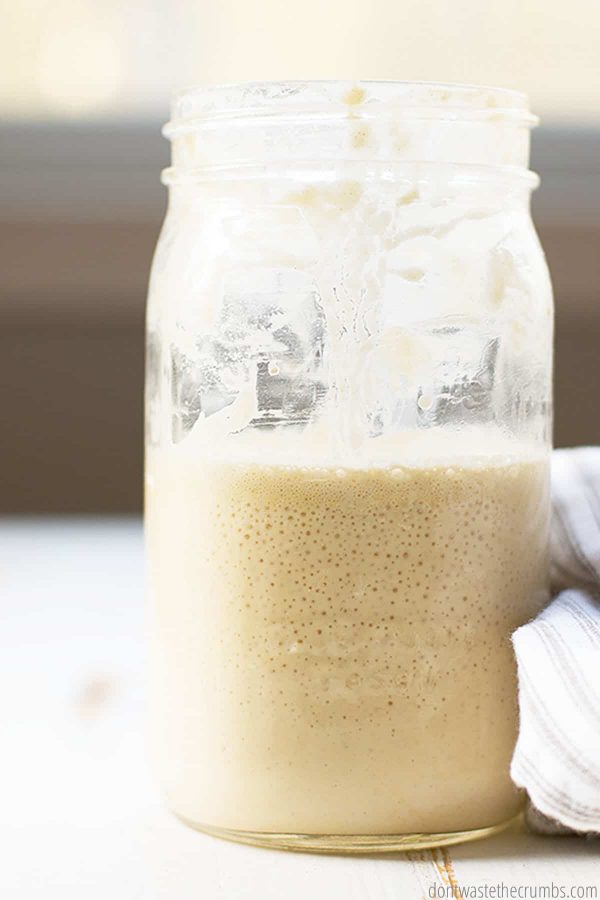
SO WHICH IS THE BEST METHOD?
Ultimately, I generally choose sourdough because of the benefits of sourdough bread. Even though I don’t have any wheat or gluten sensitivities, I’ve noticed it is easier on my own body to digest, and I’ve been able to fit regular sourdough bread baking into my kitchen time.
I typically use about 50% white flour in a lot of my bread recipes. And since soaking has no effect on white flour and only minimally reduces phytic acid, I can’t say I’m all-in for soaking for bread.
There are significant benefits to sprouting, and sprouting nuts is something that can easily be incorporated into a busy schedule, even when you include the dehydrating time (now that I know we prefer them after a full 24 hours).
However, the issue of sprouting grains is like a teeter-totter and I’m not yet completely on board. Sprouting grains means we have to buy them whole, and I haven’t yet found a quality source that is affordable. So, for now, sprouting is just an occasional choice for me.
Whether you choose to include any or all of these real food methods for getting the most nutrition out of your food will depend on your particular time, budget, and priorities.
If you choose sourdough, like me, here’s a great place to get started!
EASY SOURDOUGH BREAD RECIPE
Now that you know all about sourdough, and you have a sourdough starter established, it’s time to make this easy sourdough bread recipe!
Sourdough has always seemed like a specialty bread to me. Little did I know it would almost beat out No-Knead Artisan Bread in its simplicity. A fancy sourdough loaf I can make at home and slather with butter? Yes, please.
Seriously, sourdough bread is so easy to make!
The only downside of sourdough bread is that it does take time. The work itself isn’t hard, but you must plan ahead if you’re wanting to make sourdough 100% from scratch.
Most sourdough bread recipes call for a long rise, anywhere from 6 to 24 hours. It’s during this long rise time that the yeast and good bacteria from the sourdough starter spread throughout the rest of the ingredients and ferment the dough. A combination of the sourdough starter and the fermentation time is what gives sourdough bread its signature tang.
- Long Ferment [long rise time(s)] = more tang, more sour bread
- Short Ferment [short rise time(s)] = less tang, less sour, more mild bread
Making sourdough bread is my favorite way to use my Sourdough Starter, but you can also switch things up and make sourdough baguettes, sourdough rolls, or even sourdough pizza dough, all using that same sourdough starter.
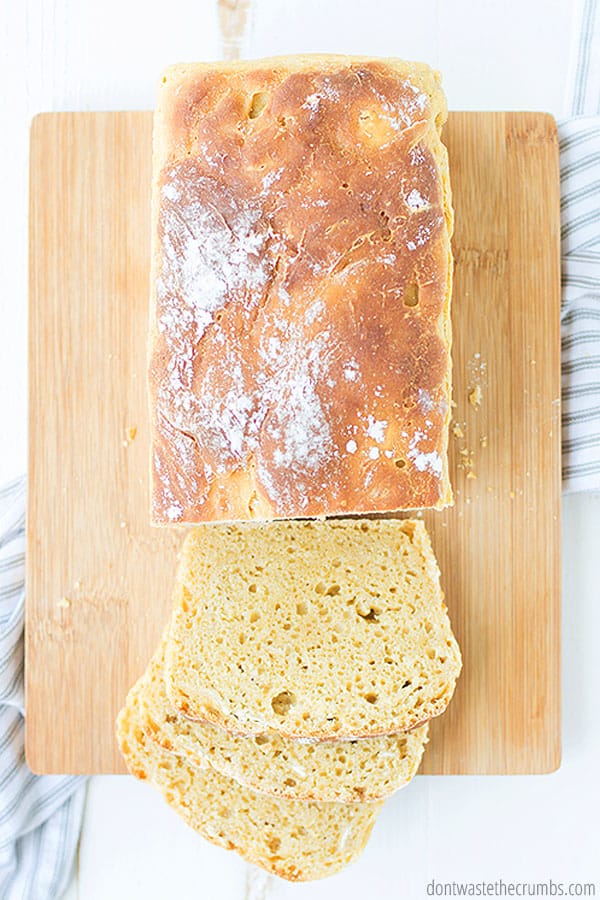
HOMEMADE SOURDOUGH BREAD RECIPES
Try one of these homemade sourdough bread recipes once your sourdough starter is ready to go!
- Simple Sourdough Bread Recipe: This is the perfect sourdough bread recipe for beginners, with step-by-step instructions!
- Sourdough Sandwich Bread: Bake a loaf or two of sourdough sandwich bread for lunch all week long.
- Whole Wheat Sourdough Bread: This whole wheat sourdough bread is slightly sweet.
- Gluten Free Sourdough Bread: A great place to start if you need to make gluten free sourdough.
SOURDOUGH BREAD TIPS AND TRICKS
Now that I’ve been making sourdough bread for a while, I’ve discovered some tips and tricks to get the best loaf, and I’ve got them for each step of the sour bread process.
MAKING DOUGH…
- You want to bake with a starter that is at its peak – when nearly all of the yeast has eaten but it hasn’t begun to go dormant because of the lack of food. You can see when a starter has peaked because it will have a dome shape on top.
- If you want to use freshly milled whole-grain flour, be sure to follow a recipe that calls for that. Freshly milled flour absorbs water at a different rate than store-bought flour.
- Starters peak in the 2-3 hour range after each feeding.
- Don’t skimp on the water that recipes call for. Sourdough recipes are wetter than traditional breads made with baker’s yeast. Use a kitchen scale for the most accurate measurements.
- Make the following alterations to all sourdough recipes:
- In the beginning, stir together the starter, water, and half of the flour and let it sit for 10 minutes. (This rest time is called autolyse.)
- Add the salt after all the remaining ingredients, knead briefly in a stand mixer (or by hand), and let it sit for 10 minutes.
- When the dough is just pulling away from the sides of the mixer bowl, dump it out onto a lightly floured surface and let the dough rest for 10 minutes.
- Knead by hand for 5 minutes (I like to make folds), then rest for five minutes. Repeat one more time.
- You can try the window-pane test. Grab a small ball of dough and roll it flat, then stretch it. If it stretches to the point where you can see through it (like a window pane) without breaking, it’s been kneaded enough. If it breaks, it needs more kneading.
- A digital scale and bench scraper are excellent tools for making sourdough often. I recommend investing in both once you’ve made your first loaf of sourdough bread and are committed to the process.
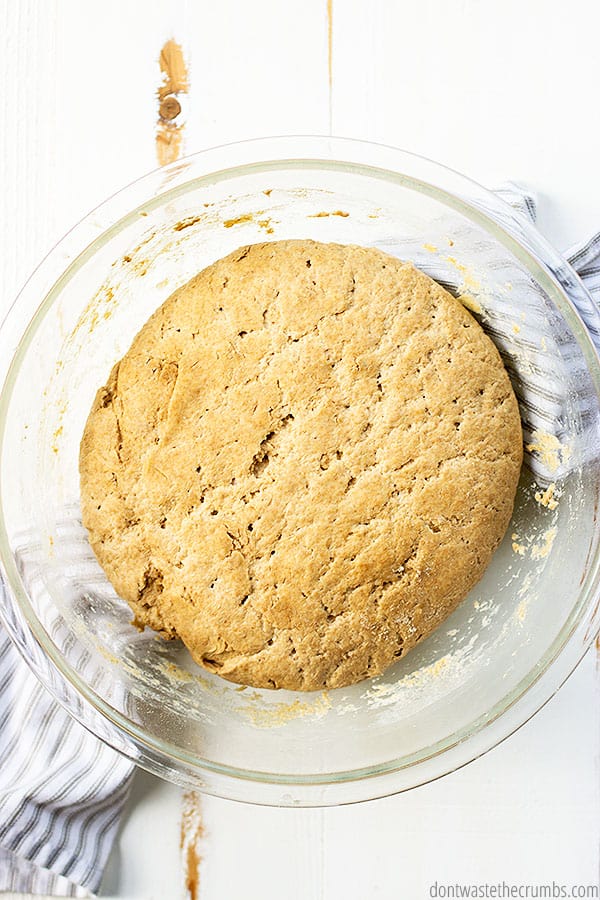
DURING THE FIRST AND SECOND RISE…
- The warmer the temperature, the quicker the dough will rise. Controlling the temperature allows you to be in greater control of when the dough will be ready, and in turn, when the bread will be ready.
- The quicker the dough rises, the less sour the bread will be.
- The longer the dough rises, the more sour the bread will be.
- The following methods will provide a consistent temperature for the bread to rise: a heating pad on low, in an oven with the light on, or in a dehydrator. Consider adjusting the temperature higher and lower to find the “sweet spot.” Using my heating pad on low gives me a rise time of 5-6 hours.
- Drier climates can benefit from using a damp kitchen towel to cover the dough as it proofs.
- It is possible for sourdough to over-rise. When baked, this dough will become flat discs. (You can still eat those as bread crumbs or croutons!)
- The vessel in which dough rises can limit the extent of the rise. Be sure to leave plenty of room for expansion. (I almost always use my large mixing bowl and cover the large bowl with a towel. You can also use specially made proofing baskets.)
- Sourdough will not necessarily double in size during the rise(s).
- Press your thumb into the dough to check if it needs more rise time. If the indentation stays, it’s done rising. If it springs back, it needs more time.
- Two rises will produce a more sour bread than a single rise.
WHEN IT’S BAKING…
- Baking sourdough bread in pans lined with a piece of parchment paper, or baking in a cast iron Dutch oven, provides more reliable results than free-shaped round loaves, especially if you’re just starting out.
- Right before baking, slash the top of the dough with a very sharp knife or razor blade, making a 2-3 inch cut just into the surface of the dough. This allows steam to escape.
- Adding a pan filled with boiling water on the lower rack of the oven adds moisture to the bread as it bakes.
- Let the bread cool completely before slicing. Slicing too soon will give you a gummy texture rather than a crumbly slice of bread.
If your sourdough bread fails despite repeated attempts, use the starter for other baked goods for a few weeks to a month. Meanwhile, feed the starter consistently to build up the concentration of the yeast.
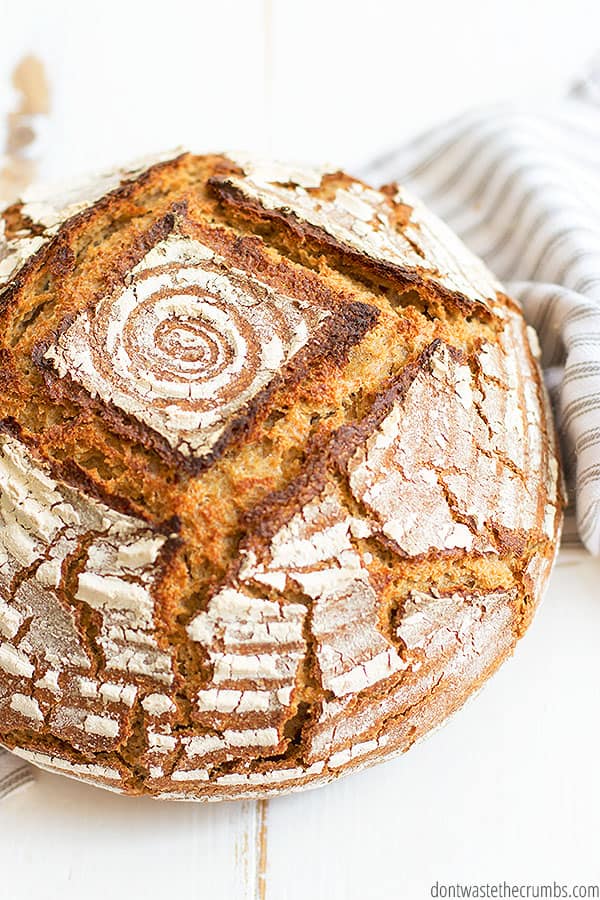
RECIPES FOR USING LEFTOVER SOURDOUGH DISCARD
Once your sourdough starter is established, you’ll end up with extra starter, which you can pour off (a.k.a. discard) and keep in the fridge in a jar with a lid. You can use that discard in recipes too, so you’re not wasting food and getting some of the benefits of sourdough. These are my favorite sourdough discard recipes:
- Sourdough Pancakes
- Sourdough Biscuits
- Sourdough Waffles
- Make Sourdough Crackers with either starter or discard
- Turn any pizza dough recipe into sourdough pizza crust by subbing some discard for the water and flour in the recipe!
SOURDOUGH BREAD FAQS
What does sourdough bread starter consist of?
Sourdough bread starter consists of only TWO ingredients, flour and water. It’s very easy to make and it’s worth the wait.
What does sourdough taste like?
The taste of sourdough is sour and tangy because of the natural fermentation process. It’s so delicious, you have to give it a try!
Is sourdough bread better for you than whole wheat?
There are benefits of sourdough bread that whole wheat bread just doesn’t have. Sourdough bread is more nutritious and digestible and is filled with probiotics that are great for gut health!
Is sourdough bread healthy?
Yes! Sourdough contains a list of vitamins and minerals (magnesium, B vitamins, zinc, calcium, & etc.), plus fiber and protein. Sourdough bread is made with a starter culture (rather than a yeast packet), which is thought to be good for gut health. Read more about the benefits of sourdough bread in the post above.
SOURDOUGH RECIPES AND TUTORIALS
- Sourdough Pancakes
- Simple Sourdough Bread Recipe
- How to Make a Sourdough Starter
- Gluten Free Sourdough Starter
- Sourdough Biscuits
- Whole Wheat Sourdough Bread
- Sourdough A to Z eCourse (plus recipe book!)
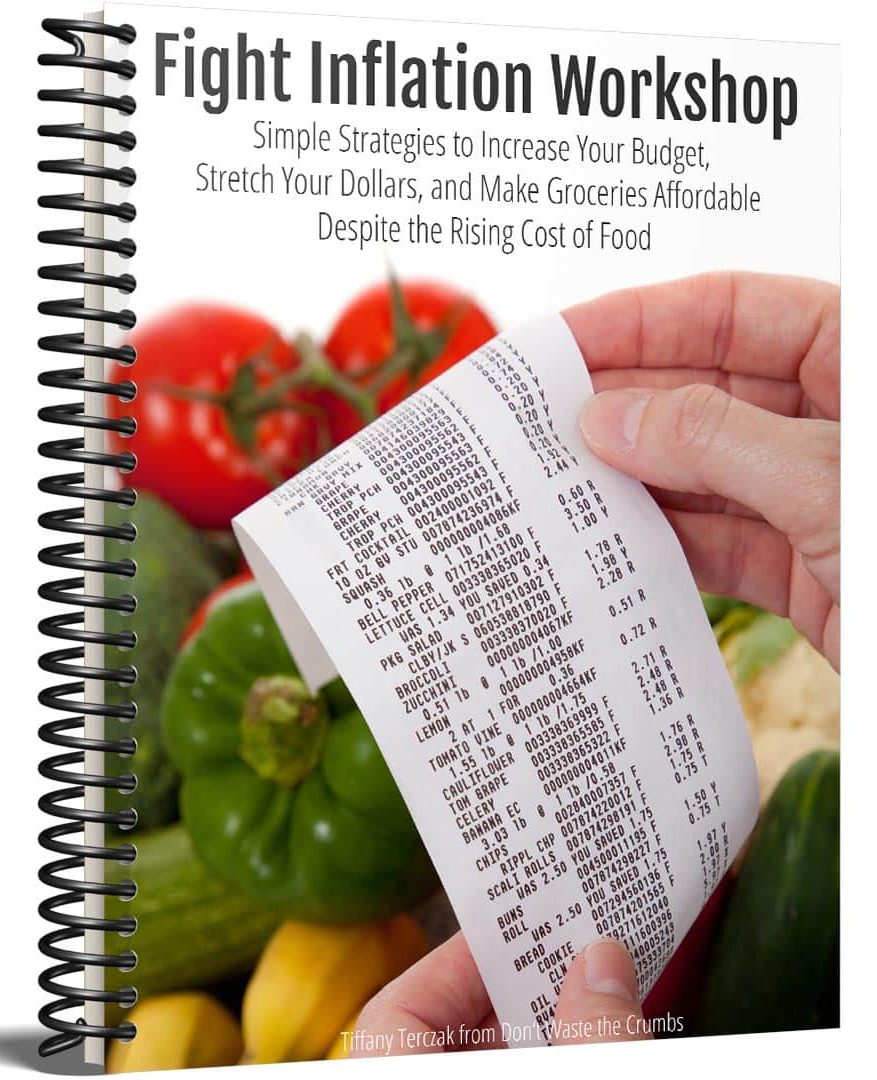

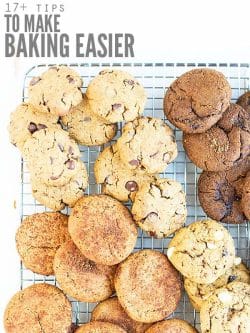
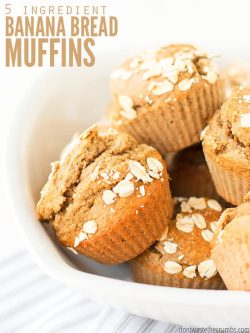

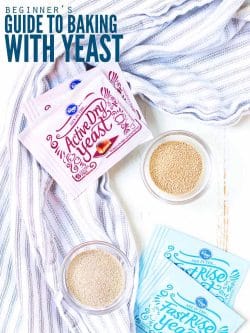

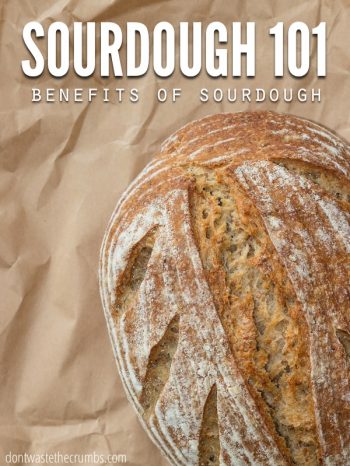
LOL! I’m so relieved to know I’m not the only one afraid to start the starter I purchased! I think I’m finally feeling brave enough to give it a go but might wait until after I come back from vacation early next month. I don’t want to lose it to neglect while I am gone!
🙂 If you’ll be gone for a week or less, your starter will be fine in the fridge. Just feed before you leave and when you get back. I think there’s some grace too, because I once forgot about the starter in the fridge for about 10 days. I fed it twice and it revived without a problem!
Thanks! I actually may be gone for 2 weeks. I know, I’m spoiled 😀 But it costs so much to fly anywhere from Hawaii that I feel like I need to “get my money’s worth.” LOL – first world problems!!
Thanks Anjanette! I’m reading that it’s possible to do sourdough in even the colder climates, but I think it just needs a bit more time and patience. You can do it!!
I’d love to learn how to make totally gluten-free sourdough bread. I love sourdough, but at this point I can’t risk it. I know it breaks down some of the gluten, but the longer I’m away from gluten the more sensitive I am to even a little bit of it. I hope you’ll post any recipes you come across for that kind of recipe! Thanks for sharing this with us on Wellness Wednesday 🙂
Thanks for hosting Trisha – and I’ll definitely share any GF sourdough I come across!
Yum! I’ve tried making a starter twice and both times flopped. Looking forward to reading how you made yours!
You can do it Steph! Both the rye from scratch & starter worked well. Plus I’ve got a few more tips to share!
Hey Tiffany!
I LOVE sourdough. It may be my favorite type of dough. I have been way too leery to make it from scratch =/ But if you think I can do it, I may give it a shot!
Can’t wait to see your photo tutorial next week! Thanks for sharing on Natural Living Monday 🙂
Hi Andrea!
You.Can.Do.This! The starter is a cinch, and if you’re willing to experiment, the bread is delicious! ~Tiffany
Hi Tiffany!
First,I just want to let you know that I LOVE LOVE LOVE your blog! It has really inspired me to try new things and to become more aware of the junk in the food that I thought was healthy. It is also encouraging me to be more frugal in my grocery spending! Both are very good things!
Now I am super excited to try the sourdough! Thank you for posting this!
Katie
Hi Katie!
THANK YOU for your very kind and encouraging words! I’m happy to help. Keep up the great work, and I look forward to getting to know you better! ~Tiffany
Hopefully you can help me…I think I may have made a big mistake 🙁 I got a sourdough starter from Cultures for Health and have activated it and was supposed to do my second feeding this morning. Only problem is that I forgot to throw out all but 1/2 cup of the starter before adding my water and flour this morning. I went ahead and mixed everything together and put it back in a warm spot…is it ruined? Has anyone else done this before?
Mindy,
You’ll be fine. They advise pouring some out so that the starter doesn’t overflow your jar/bowl. I did the same thing with mine and there were no problems. You may want to pour some out the next feeding though, otherwise you may have dough all over your counters. 🙂 Enjoy!!
Whew! That’s a huge relief…thanks! I could have cried when I realized what I did (well, maybe not cried, but it was upsetting 🙂 So does that mean that I could keep all the starter if I have a large enough container? Or split the starter into more than one container?
LOL, I know the feeling, and there WOULD have been tears if it were me! 🙂 Yes, you can keep the starter going. If you’re in the initial growing of the starter, pour some off if it outgrows the container and use it in pancakes, waffles or biscuits. You don’t want to split the starter until you know for sure it’s ready to go. ~Tiffany
Thanks for the suggestions…we’ll definitely do pancakes for breakfast one day this week 🙂 Thanks for keeping up such an awesome blog…it’s really inspiring to newbies like me!
Glad I can help Mindy, and thanks for your very kind words!!
I love sourdough bread! In fact I just posted a recipe using homemade sourdough bread. I love how you explained the science behind it. When I did my post on how to make sourdough, I never even thought to do that 🙁 My brain jut isn’t wired that way 🙂
Hi Lisa,
I’ve found that unless I know the WHY behind my actions, I’m not always successful in implementing changes. I figured maybe there are others out there who think along the same lines, lol. 🙂 ~Tiffany
I love sour dough but it doesn’t seem to love me back. I’ve got the starter and have baked 2 loaves, neither of which rose so they made fantastic door stops *sigh* This weekend will be the winner, I can feel it!
I LOVE your enthusiasm Kimberly! I’m still working out the kinks too, but there’s GOT to be a way otherwise everyone wouldn’t keep making it, right? Let me know if you stumble across THE key secret before I do! ~Tiffany
I’ve been making my own sourdough for a couple of months now. I only make one loaf/wk, because it’s only my husband and I (son doesn’t enjoy it, so he gets oatmeal bread.) I can’t get over and satisfying it is to know that I harvested my very own starter. Love it!
Isn’t that neat? Kinda makes me feel very “accomplished” that I didn’t need to buy yeast to make bread. 🙂 Oatmeal bread sounds good too!!
Sourdough is the only kind of bread I make anymore, for the past year. You can also make sourdough other baked goods like chocolate cake, cinnamon raisin bread, donuts, etc. I found Jessie Hawkins book The Vintage Remedies Guide to Bread to be WONDERFUL on this topic.
Another great book suggestion Jennifer – thank you! I’ve seen it in baked good recipes, but was curious how the taste would come out. Then again, pair anything with chocolate and I’m good to go. 🙂 ~Tiffany
Im so excited to read this post, Ive been wanting to make Sourdough for forever. I am just now taking baby steps into bread making. I have a breadmaker, but I dont like it. I have been letting the machine mix and knead for me, then baking myself. The loaves from the breadmaker come out to large for sandwhich bread.
I agree Lisa, and I’d let a bread machine do the same for me if I had one. I love being able to shape and size my own loaves. Artisan-style are so beautiful, and perfect for gifts! 🙂 ~Tiffany
OMG!! A few weeks ago I purchased a starter from Cultures for Health. I activated it. I made pancakes a couple of times so there was no “waste” when I was feeding but not baking bread. I even gave my mom some of my starter. 🙂 I also made a spice cake which turned out really good.
I have purchased the book “Sourdough from A to Z” from GNOWFGLINS. I learned a great deal reading the introductory information about sourdough let alone the numerous recipes I can use. However, I must admit I am intimidated by the bread making. What if it doesn’t rise, what if it turns out wrong. I am just going to have to get over I know. lol
I am currently growing my started over the next few days with intentions on making bread later this week. I am going to use the recipe that came with my starter. I agree with Joy on making a sticky dough prior to kneading.
I am going to try and overcome my fear and make bread. I can’t wait to read your upcoming post for more tips and advice.
Thank you for the reminder that I had that book Emily! Remember that sourdough is an ADVENTURE. If it doesn’t rise or turns our wrong, make breadcrumbs! Let us know how your bread turns out! ~Tiffany
Have you tried the brown rice sourdough from G.E. M. Cultures?? Very yummy, and easy to make! Gluten=free folks can have sourdough, too!!
I haven’t heard of GEM Cultures, but Cultures for Health has a brown rice variety too!
OK – now I need to learn how to make this gluten free whole grain. 🙂
It can be done!! I’ll work out the “issues” with the wheat version and pass them on to you for the GF variety! 🙂
I just bought a SF starter from Cultures for Health and i have to admit, i’ve been too scared to start it. The directions aren’t too bad but the i’m afraid after i have my starter i would think know what to do next and i’m terrified of wasting it while I figure it out! I bought it with the intention of keeping the starter around for generations. I was a little confused, once I get it going, then what? Where and how do I store it? And separating it to make a loaf. I feel like i need to fully grasp every aspect of it before I start so I don’t mess it up. (i got it in the mail right after starting to make kefir and kombucha. Overwhelming!)
Deep breath Andrea – it’ll be okay!
I’ve got an in-depth post coming next week that will answer all your questions and put your mind at ease. For now, go ahead and get your culture started. Instead of pouring down the drain, pour the starter into a bowl and make the pancake recipe – my kids ate an entire batch in one sitting! That should get you through until the post, when hopefully you’ll have enough to keep going AND make bread. 🙂
But I understand the kefir, kombucha AND sourdough dilemma. I’d be overwhelmed too!! ~Tiffany
This is too funny … I just took 3 sourdough loaves out of my oven just before checking my email and reading your post! (-: Obviously, we LOVE sourdough around here! A couple of things I have learned during my trial and error with the sourdough bread. I love the look of the shaped loaves, but I have decided to only make it in the bread loaf pans(or some other pan with high sides) from now on. This allows the dough to keep a shape and not flatten out. I guess I need to back up a little … the reason why it flattens so much (besides the long rise) is because I have REALLY backed off on the amount of flour I incorporate in this dough. It makes all the difference between a doorstop loaf and a nice, soft, tender one! Think about it – if you use whole grain flour with all that bran included, and you let it rise for half a day, it’s really going to absorb moisture during that time. So, when I mix my dough, and get to the kneading stage, I only add enough flour so that it to pulls a little from the sides of the mixing bowl. THAT IS ALL. It’s still a very wet, sticky mess. But it doesn’t matter now, because it doesn’t need to be shaped. You just dump your dough into a greased pan. I repeat … DUMP the dough. Ha! The pan now helps it keep its shape. So far we have been so much happier with the end product when I make it this way, rather than starting with a dough that is firmer that can be handled, shaped, etc. That is fine for regular loaf bread, but no for sourdough! Oh, just more tip – The order of ingreds. for regular bread is H2O, oil, honey, some flour, mix a little, THEN add yeast and the rest of the flour. For sourdough, it’s different. H2O, your starter (basically the yeast), oil, honey, some flour, mix a little, THEN add salt and more flour. The point is to not allow yeast and salt to interact too much or the salt will kill the yeast and the bread won’t rise (ask me how I know!) Just my 2 cents again (-: -Joy
Joy,
THANK YOU for all the wonderful tips. I love how you’re so forthcoming with your experience for the rest of us to glean from!
I’ve been testing out loaves and your tips explain why they’re not coming out quite as I’d like… although the family isn’t complaining about the taste! I’m obliviously not an experienced sourdough baker, but I think my basic recipe is pretty good. With your ideas though, it could be amazing! Now to get my starter bulked up again lol! Can’t wait to test it out! ~Tiffany
Tiffany, this is very well written and will help many people understand the benefits. I have always loved sour dough!
Thanks Rachel! It’s said that sourdough is quite possible the best bread for you, especially when made with rye. I’m cool with that – bring on the butter! 🙂 ~Tiffany
I like sourdough with walnuts
I love a good, chewy artisan whole grain sourdough. I have made white flour sourdough myself with good success, but when I tried with whole wheat flour it did not turn out well at all (unless you were wanting a doorstop!). I have found a local bakery that makes a wonderful multi-grain seedy sourdough, but it does not have that sourdough “tang”. I pretty much have to take their word for it that it IS sourdough. I asked them about that and they said that is the nature of the multi-grains. Have you had success with making sourdough with whole and/or multi-grains?
Hi Karen,
I’ve made two loaves in the past couple days, both using a rye starter. On the first I used white whole wheat flour with a double rise (4 hours each) and the second I used bread flour with a 12-hour single rise. The white flour loaf turned out a bit softer on the inside, and rose “slightly.” The whole wheat was tougher inside, but seemed to rise a bit better.
I’m still experimenting, but I’d like to try a whole wheat with a double rise (8 hour/12 hour) and a white the same way to get a better side-by-side comparison. I need to feed my starter first though for a few days! I can say that the tang was actually more prominent with the white loaf, but it wasn’t completely gone with the wheat. I wonder if the heartiness of the whole grain itself counteracts the tang a bit, because I used the same rye starter in both loaves and I KNOW it was sourdough!
I’ll keep trying, and keep updating with the results! ~Tiffany
I’ll
Good timing! I’m planning on my first sourdough attempt either this weekend or early next week, depending on how much I end up trying to get done this weekend. I haven’t started my starter yet, but I found directions to make one using water kefir to speed up the process (and I have PLENTY of water kefir!).
Ginger,
Starting the starter is so easy you’ll wonder why you didn’t do it sooner, lol. I read about making homemade gummies with water kefir. THAT would be SO GOOD! ~Tiffany